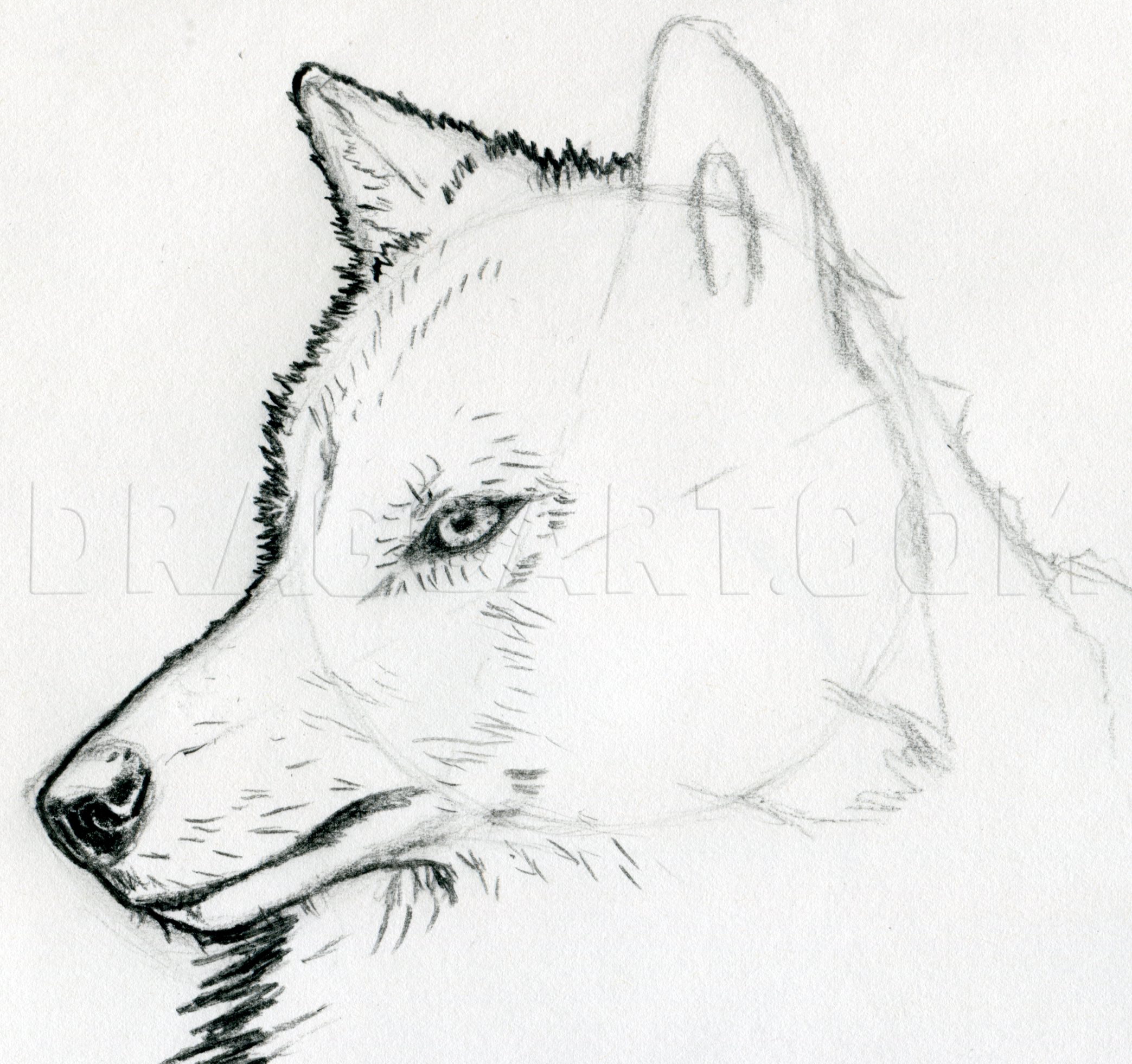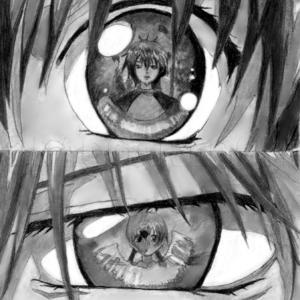1
I used charcoal pencils for these sketches. You can still follow along using regular graphite pencils and substituting an eraser for white charcoal. I used HB charcoal for general sketching, 2B charcoal for dark shading, and white charcoal for highli
2
As with all drawings, start off with basic shapes and guidelines before moving on to more complex details. I've always found starting with a circle and then building around it to be the easiest way to start most of my drawings. An HB charcoal pencil
3
Lightly sketch in some basic features. Sketch in the eye, nose, mouth and develop the ears and fur outlines a bit.
4
Starting with the top left quadrant of the drawing, start using bolder lines to define the wolf. Make your lines as confident and crisp as you can. Don't overdo it with the details.
6
Define the rest of the wolf. Try to erase or at least lighten any unneeded guidelines. You can call this sketch done here or even color it if you so chose.
7
I went ahead and lightly and roughly shaded over my sketch using soft willow charcoal. An equivalent to this would be to roughly shade over the drawing using HB charcoal.
8
After smoothing out my shading using a bit of paper towel, I quickly and roughly erased in a few highlights. I went over some of my darker lines again with HB charcoal before calling this sketch done.
9
Alright, time for the more complicated sketch. So, if you are anything like me you probably struggle with full body drawings of people and animals. I've found that the easiest way to draw a semi proportional/proportional figure is to start my sketchi
10
Now roughly sketch in the features of the wolf's head. Nothing needs to be perfect here. You just need a starting point that will help you with future proportions.
11
lightly and roughly sketch in the basic forms for the rest of the wolf and the rock that it is resting on. Keep in mind that none of these guidelines are permanent. They are just there to give you an idea of where everything is going to go.
12
Move back to the head and start using bold, crisp lines to define the head. Follow the same procedure that you did for the previous sketch.
13
Start working your way down the wolf's torso with you sketching. Try to define the front legs a bit more. You can also define the background/rock a bit more.
14
Define the front legs and the rest of the torso. I left the guidelines un-erased for the most part just to show how the forms were built around them. You can erase you guidelines as you move along, though.
15
Finish sketching in the rest of the wolf/drawing. If you are using the same shading technique that I am using then don't worry too much about making your lines perfect and erasing every little extra line, that will all take care of itself in the next
16
Here I used a stick of 2B charcoal to lightly/roughly sketch over my drawing. You can use softer charcoal (4B, 6B) if you would like.
17
Smooth over you drawing now using some paper towel or a soft cloth. This will greatly lighten your previous lines but it will also get rid of your guidelines, for the most part.
18
Now it's time for the fun part! Using white charcoal is almost like painting or coloring with pastels. Remember that the more layers of white charcoal you put down, the brighter the white will be. So for you first layer you'll want to lightly go over
19
Here I using an HB charcoal pencil do go over the eyes, nose, ears, and the wolf's outline again. I also added another layer of 2B shading to the background.
20
By adding a bit of white charcoal to the background and then blending it into the dark charcoal using a blending stump, I managed to smooth it out a bit. I then extended the rough 2B shading to the bottom left portion of the sketch. I added the first
21
Define the left side of the drawing. I first went over the wolf with another more refined layer of white charcoal shading. I then redefined, the wolf's outline using an HB charcoal pencil. I added a bit of white charcoal to the rocks and then blended
Comments 0
Details
March 22, 2013
Description: Hey everyone, this tutorial will show you how to sketch an arctic wolf, one of my favorite types of wolves. I hop you have as much fun with this drawing as I did!






















































































